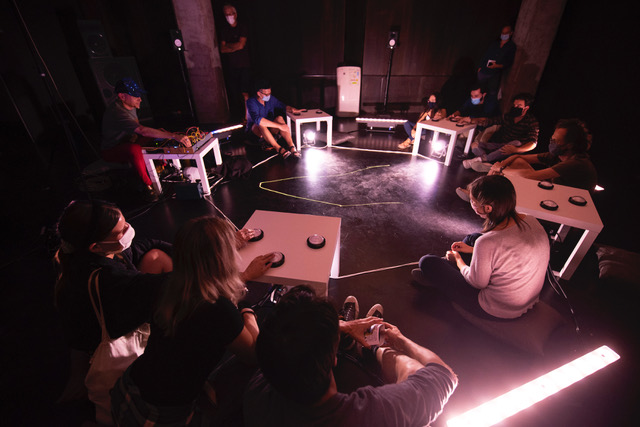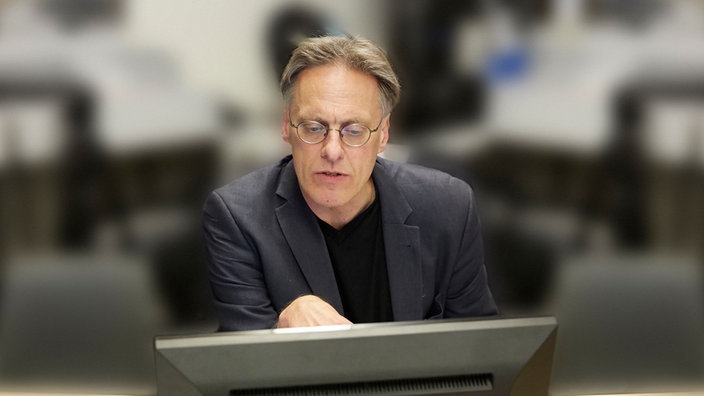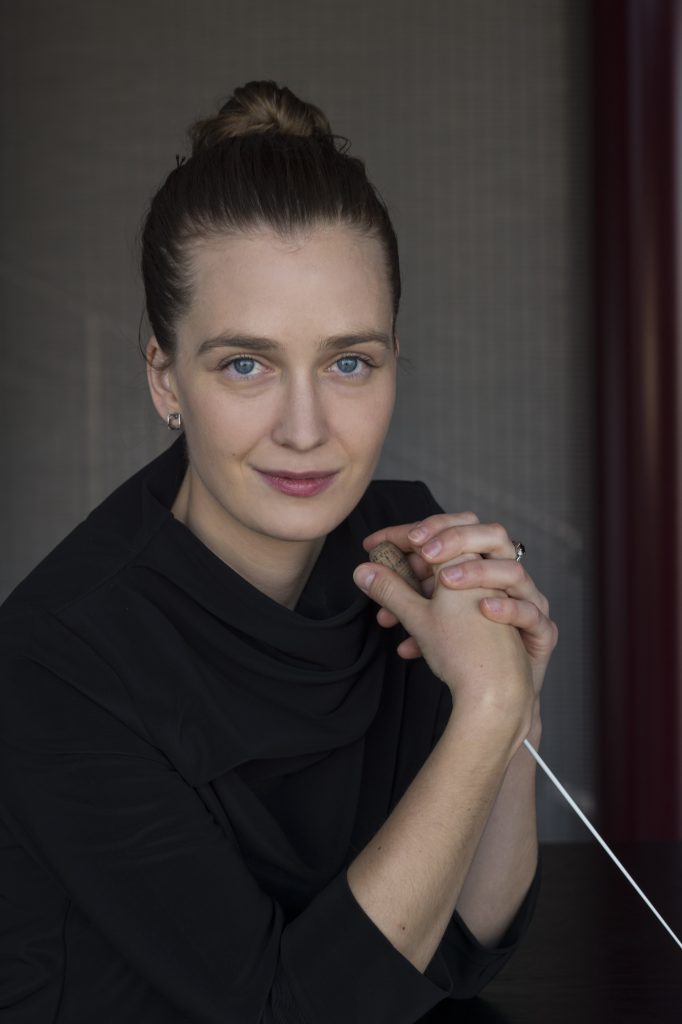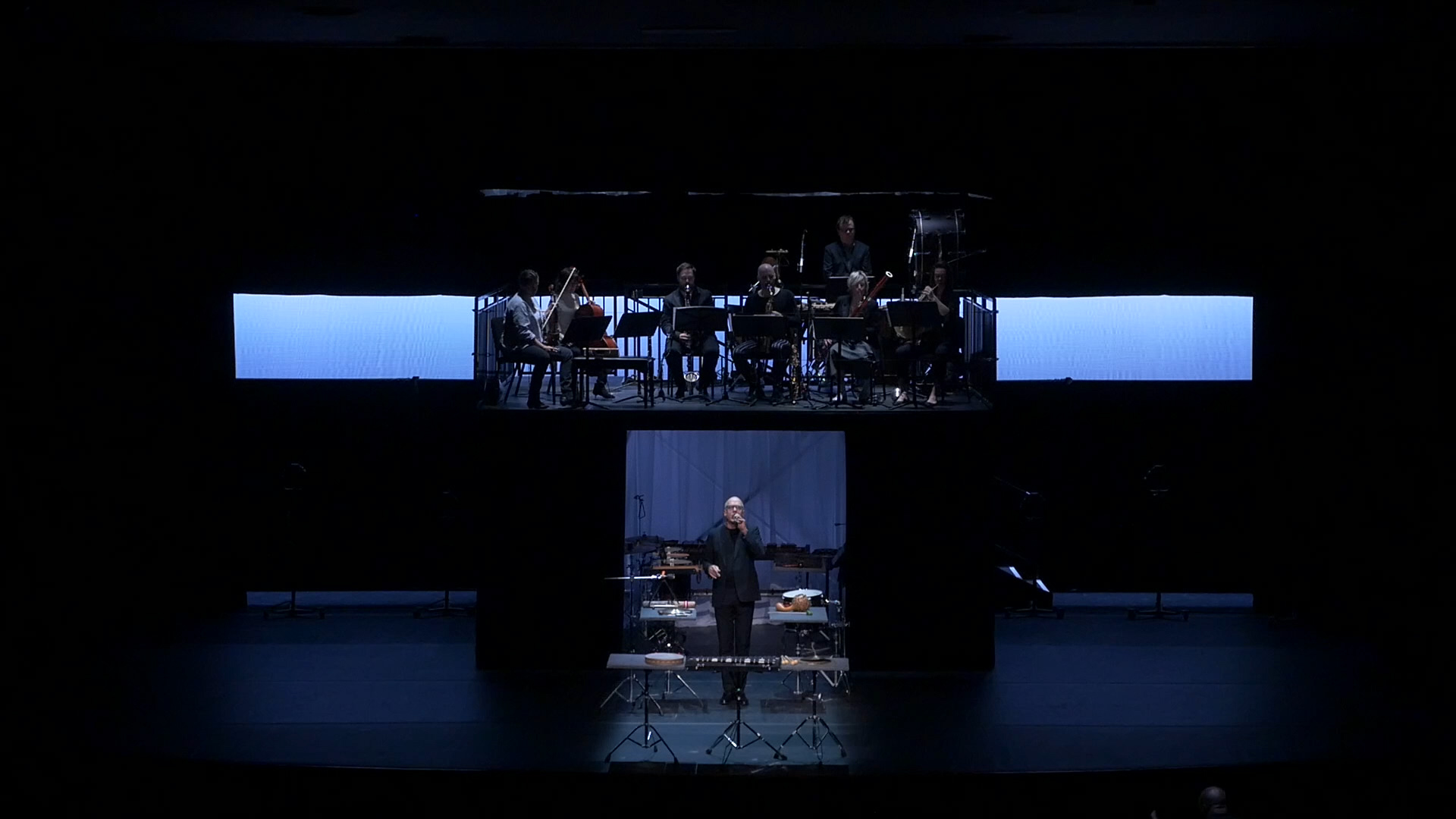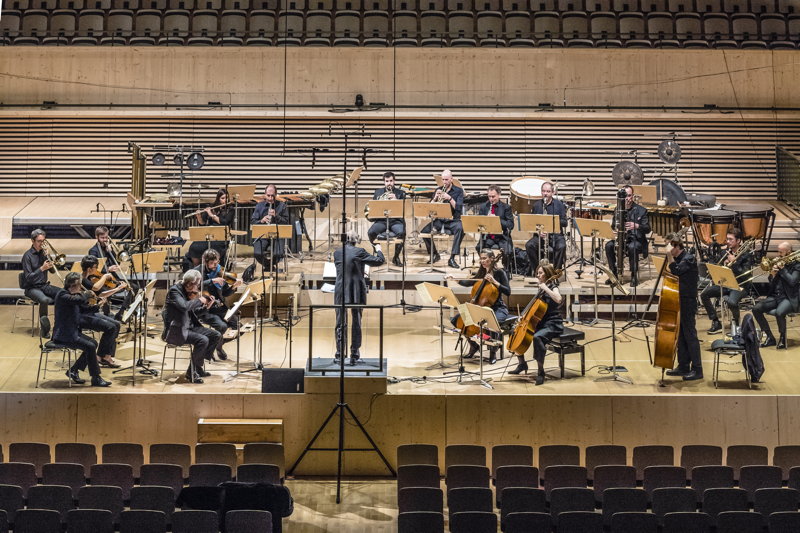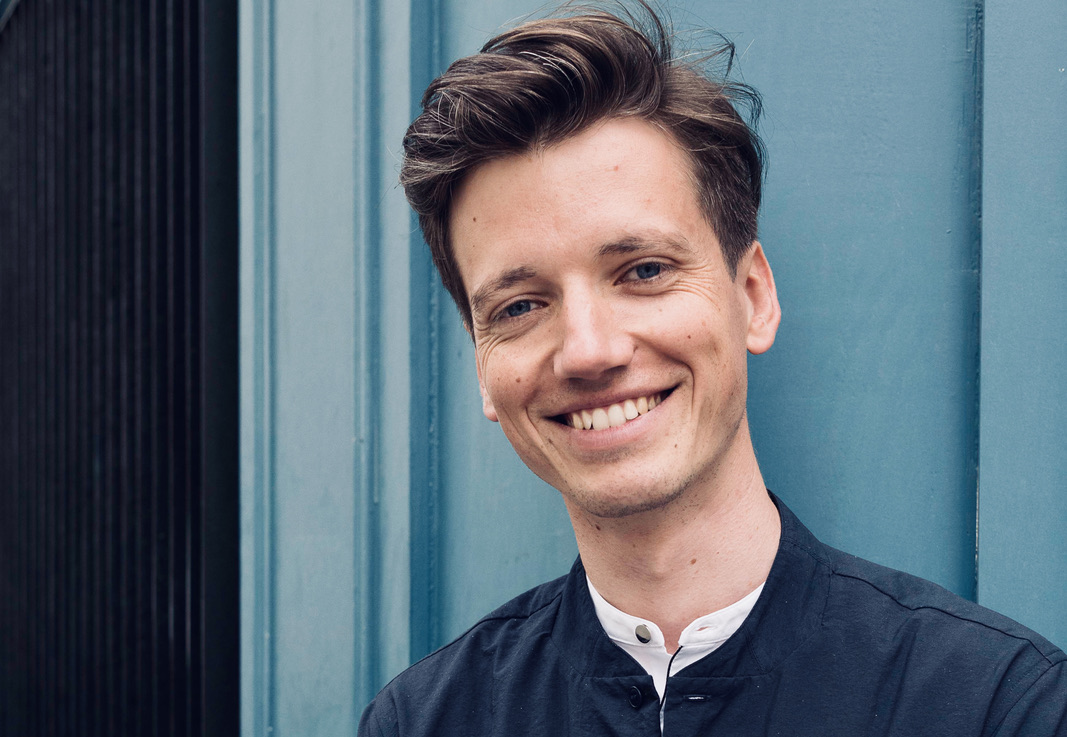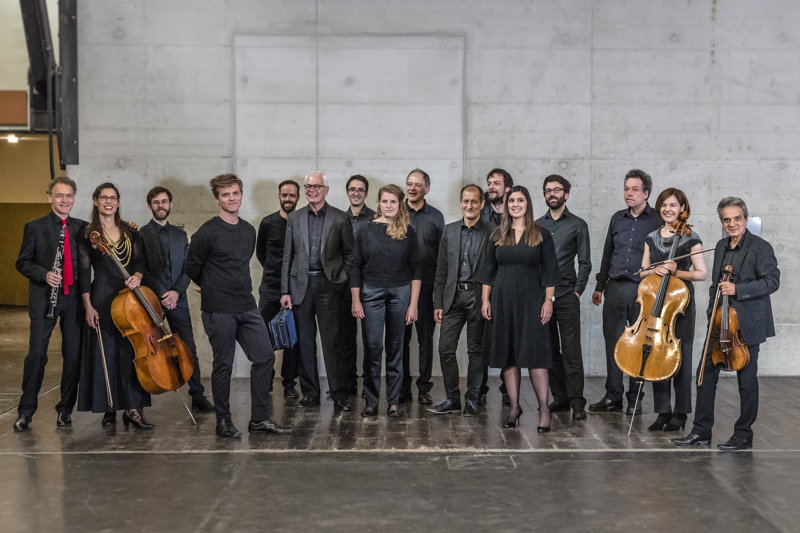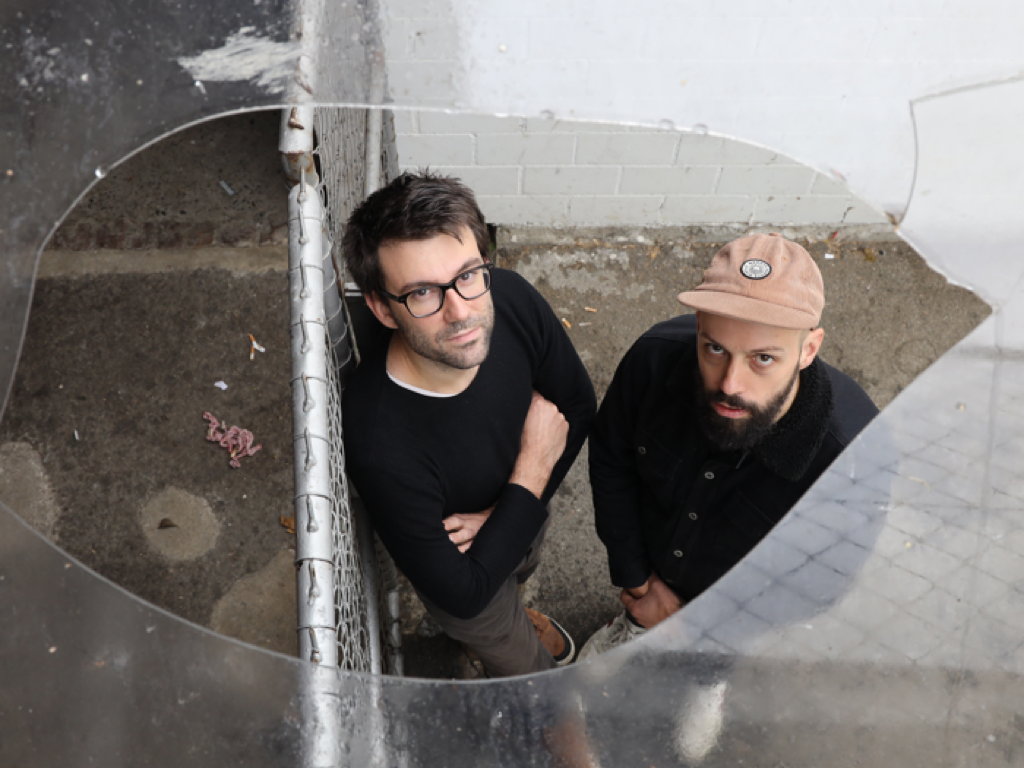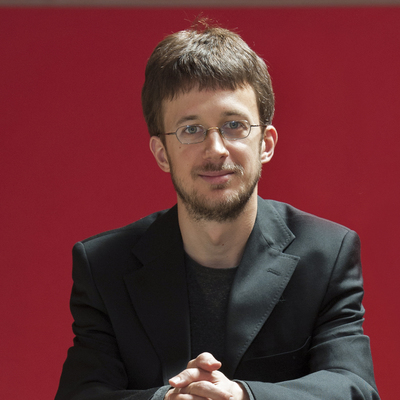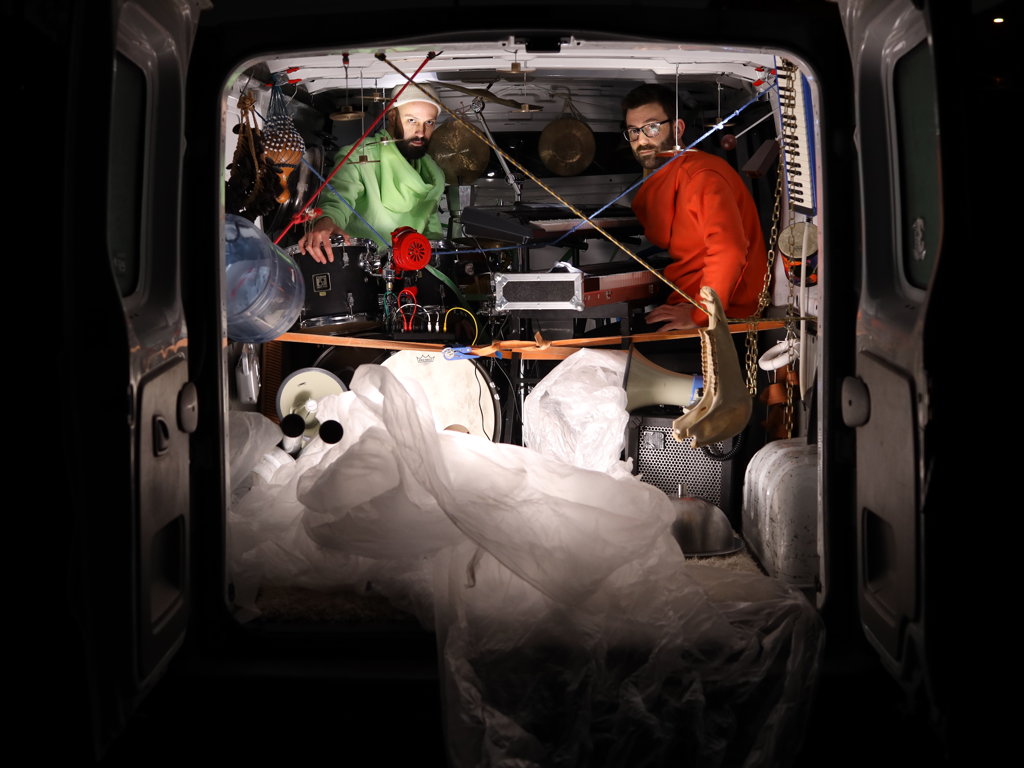Sommerserie zum Schweizer Musikpreis No. 3 : Ensemble Nikel.
Vibrierende und virtuose Interpretation zeitgenössischer Musik bilden die einzigartige DNA des Ensemble Nikel um den Elektrogitarristen Yaron Deutsch (*1978). Nikel tritt dabei fast als Popband auf und unterwandert das Image eines oft radikal lauten Elektrosounds. Nikel sei „radikal zeitgenössisch“ heisst es in der Begründung zum Schweizer Musikpreis 2023 ans Basler Ensemble: Yaron Deutsch, Elektrogitarrist und Ensemblegründer, im Gespräch:
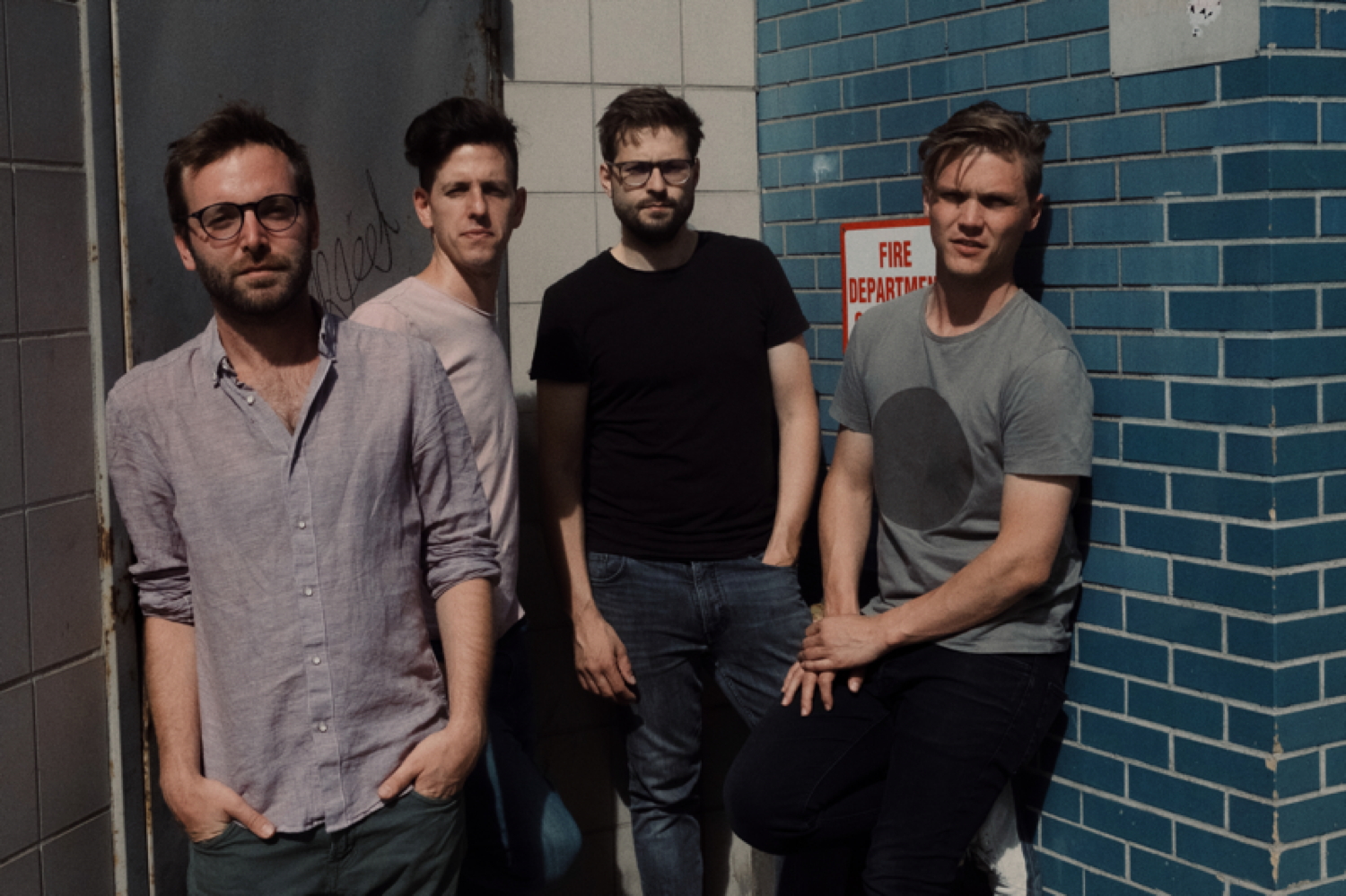
Gabrielle Weber
Was bedeutet der Preis für Nikel?
Es ist schlicht berührend, wenn die eigene Arbeit so unverhofft anerkannt und ausgezeichnet wird. Wir waren komplett unvorbereitet als wir informiert wurden: das macht es sehr besonders. Und ganz pragmatisch eröffnet uns der Preis neue Türen und verschafft uns zusätzliche Mittel, um grössere Pläne für unser künstlerisches Wachstum zu realisieren.
Ein ‚alternativer Kammermusikklang‘ aus einer Mischung von elektronischen und instrumentalen Klängen ist charakteristisch für das Ensemble. Sprechen wir über den Anfang von Nikel: Wie fanden Sie mit der E-Gitarre zur zeitgenössischen klassischen Musik – die Kombination ist nicht naheliegend?
Mit der E-Gitarre war ich zunächst assimiliert in der Musik des Rock und Jazz, fühlte mich aber dort wie eine ‘Copy Cat’ einer amerikanischen Kultur, die nicht meine ist. Da stiess ich 2005 über ein Stück von Luis Andriessen: ‘Hout‘ (1991) für die Besetzung Saxophon, E-Gitarre, Percussion und Klavier. Es fühlte sich wie ein ‘Heureka’-Moment an. Das Stück mischt Musikgenres und -elemente unkompliziert. Ich fand darin eine Verbindung zu meinen europäischen Wurzeln und fühlte mich wie zuhause angekommen in der europäischen klassischen Musikavantgarde. Es gab mir eine Art Richtung vor, in welche Klangwelt ich gehen wollte.
Mit ‘Hout‘ gaben wir unser erstes Konzert in Tel Aviv 2006. Die Instrumente des Stücks wurden zur festen Besetzung von Nikel. Nach wenigen Wechseln bilden wir nun seit ungefähr zehn Jahren die feste Stammformation: Brian Archinal an der Perkussion, Antoine Françoise, Klavier, Patrick Stadler, Saxofon, und ich mit der E-Gitarre. Wir inspirieren uns gegenseitig.
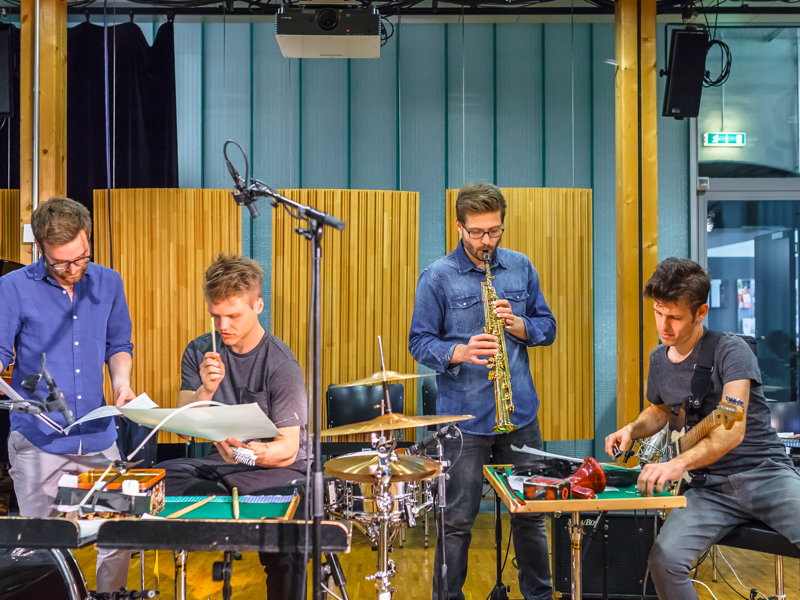
..und was bedeutet der Name?
Drei Punkte: Zuerst wollte ich keinen Namen der Musik assoziiert. Im Namen sollte zudem ‘Metall’ als eine unserer Klangfarben anklingen. Und zuletzt erinnert Nikel an die israelische Künstlerin Lea Nikel und ihre abstrakten farbintensiven Arbeiten. Sie war In den sechziger und siebziger Jahren in Paris und New York tätig und verstarb 2005 in Tel Aviv.
Es ist wie wenn Wassertropfen langsam zu einem Organismus zusammenfinden.
Wie kam es zum Standort Schweiz..?
Dass drei von vier Mitgliedern in der Schweiz sind, ergab sich von selbst. Ich war immer ein ‘Missionar’ für Musikschaffen ohne Nationalität, für ein Modell von Ensembles ohne eine nationale oder lokale Festlegung: es geht mir darum, mit den Musikern zusammenarbeiten, die ich am spannendsten finde, die mich inspirieren, egal wo sie leben. So kam es bspw. zu Patrick Stadler in Basel. Unsere Vision ist aber eine internationale.
Es ist wie wenn Wassertropfen langsam zu einem Organismus zusammenfinden.
Ausgehend von einer Einladung für ein Konzert finden wir zusammen. Unsere Aufgabe als Künstler ist es, so faszinierend, interessant und auch gut zu sein, um einen Bedarf zu schaffen. Es geht dabei um Passion: solange wir passioniert sind, existieren wir als Gruppe.
Ihr erster Auftritt in Donaueschingen 2012 war legendär – diese vibrierende Energie und rasende Virtuosität bspw. in der UA von Michael Wertmüllers Stück „Skip a beat“ ist mir in bleibender Erinnerung: Wie kam’s zur Einladung?
2010 traten wir an den Darmstädter Ferienkursen auf. Der damalige neue künstlerische Leiter Thomas Schäfer wollte in seiner ersten Ausgabe neue Stimmen präsentieren und lud uns ein. Der Auftritt hatte ein grosses Echo. Kurz danach rief uns Armin Köhler, der damalige Intendant von Donaueschingen an, und lud uns zwei Jahre später ans Festival ein.
Michael Wertmüller, Skip a beat, Ensemble Nikel, UA Donaueschinger Musiktage 2012
Was bewirkte dieser Auftritt für Nikel?
Der Auftritt vor grossem Publikum mit internationaler Resonanz war das eine: ein Karriere-‘boost’: die Vertrautheit mit der internationalen Szene, das war sehr wichtig für unser Wachstum. Donaueschingen ermöglichte uns aber auch, vier Uraufführungen von vier substanziellen Komponist:innen zu spielen, die ihre Stücke extra für unsere Besetzung schrieben. Wir hatten nicht die finanziellen Möglichkeiten, solche Stücke selbst in Auftrag zu geben. Diese völlig unterschiedlichen Stücke spielten wir seither in der ganzen Welt.
Und dieser Mechanismus geht weiter: wenn wir eingeladen werden, geben die Festivals Stücke für uns in Auftrag. Diese behalten wir danach im Repertoire. Bei der Auswahl schlagen wir Komponist:innen vor, von denen wir begeistert sind. Und diese Begeisterung ist danach in unseren Auftritten spürbar.
Unser Gedächtnis neigt dazu, sich an Extreme zu erinnern
Die Konzerte von Nikel sind bekannt für einen oft radikal lauten Elektroniksound..
Zuerst muss ich das Prädikat ‘lautes’ Ensemble zurückweisen: Wir spielen auch viele subtile Stücke, stille, taktile Musik. Wahrscheinlich führt unsere virtuose Qualität zum Eindruck: “die Musiker können spielen, dass die Wände wackeln..”. (lacht..). Ein maskuliner Power, das ist nicht unser Ding. Unser Gedächtnis neigt dazu, sich an Extreme zu erinnern. Aber es geschieht so viel ausserhalb der Extreme, eigentlich das Meiste..
Wir sind wie ein ‘elektrifiziertes Streichquartett’, ein Organismus der sehr gut zusammen funktioniert und dessen Klang sich sehr gut mischt. Wir können ganz fein abstufen zwischen laut und leise.
2017 gab Nikel zum 10 Jahr- Jubiläum der Ensemblegründung eine umfassende CD heraus – inwiefern sind die Stücke charakteristisch für den spezifischen „Nikel-Sound“?
Das erste Jahrzehnt war sehr prägend. Aus der Vogelperspektive fasst die Sammlung und Kuration der in der Box enthaltenen Stücke unsere Charakteristika zusammen: Wir spielen immer Stücke die eklektisch sind, die Elemente mischen, aber nie zufällig oder unnötig. Eine klare musikalische, nicht eindimensionale Linie verbindet alles. Wenn man näher heranzoomt, stellt man fest, dass jedes einzelne Werk zwar die wesentlichen Merkmale der Gruppe spiegelt, dass aber unser künstlerischer Charakter nicht im Einzelnen fassbar ist.
Stefan Prins, Fremdkörper 2, Ensemble Nikel 2010 (Decennial-Box).
Sie kommen gerade zurück von einem Auftritt an den Darmstädter Ferienkursen mit neuen Stücken von Jennifer Walshe und Matthew Shlomowitz: wie war die Stimmung am Ort eines der ersten wichtigen Auftritte von Nikel?
Darmstadt war fantastisch: es war unser vierter Besuch dort. Wir kamen mit einem Stück, mit dem wir uns sowohl künstlerisch als auch persönlich sehr wohl fühlen: eine außergewöhnliche, über zwei Jahre dauernde Zusammenarbeit mit Matthew & Jennifer, die uns auch auf der Bühne begleiteten. Mit zwei ausverkauften Shows und einer sehr positiven Kritik in der New York Times war es eine perfekte Premiere für das Projekt.
Minor characters, Matthew Shlomowitz / Jennifer Walshe, Ensemble Nikel, UA Ferienkurse Neue Musik Darmstadt 2022.
Was kommt als nächstes?
Es steht ein neues Album (Radio Works) an mit Stücken, die von verschiedenen europäischen Radiosendern während der Pandemie in Auftrag gegeben und aufgenommen wurden, u.a. das Stück von Shlomowitz/Walshe. Dann folgt die Uraufführung eines vierteiligen Zyklus der Komponistin Sarah Nemtsov für Nikel und Orchester in Köln und Essen mit dem WDR Sinfonieorchester. Und unsere neue Saison in der Schweiz beginnt im Januar 2024 mit einer Uraufführung von John Menoud.
Gabrielle Weber
Sarah Nemtsov, Tikkun pour orchestre, Teil 1 der Tetralogie, Ensemble Nikel, Camerata Ataremac, Ensemble Vertigo, Leitung: Peter Rundel, Festival Les amplitudes 2022, Eigenproduktion SRG/SSR.
Kritik Darmstadt 2023: Seth Colter Walls, New York Times, 13.8.2023
A Decade, Decennial-Box 2017, 4 CDs mit Doku-DVD und Buch zum Ensemble.
Yaron Deutsch, Live in New York City, 2022
Yaron Deutsch, Jennifer Walshe, Matthieu Shlomowitz, Sarah Nemtsov, Peter Rundel, WDR Sinfonieorchester, Brian Archinal, Patrick Stadler, Thomas Schäfer, Armin Köhler
Schweizer Musikpreise 2023:
Grand Prix Musik: Erik Truffaz
Musikpreise:
Katharina Rosenberger, Ensemble Nikel, Carlo Balmelli, Mario Batkovic, Lucia Cadotsch, Sonja Moonear, Saadet Türköz
Spezialpreise:
Helvetiarockt, Kunstraum Walcheturm, Pronto
Sendungen SRF Kultur:
SRF Kultur online, 11.5.23: Trompeter Erik Truffaz erhält den Grand Prix Musik, Redaktion Jodok Hess.
Musikmagazin, 22.7.23, Carlo Balmelli: Ein Leben für die Blasmusik, Redaktion Annelis Berger, Musiktalk mit Carlo Balmelli (ab Min 9:40).
Musikmagazin, 17.6.23, Inspirationen mit offenem Ende: Die Vokalkünstlerin Saadet Türköz, Redaktion Florian Hauser, Musiktalk mit Saadet Türköz (ab Min 8:38).
Musikmagazin, 13.5.23, Schweizer Musikpreise 2023, Redaktion Florian Hauser, Musiktalk mit Katharina Rosenberger (ab Min 4:55)
neo-Profiles:
Ensemble Nikel, Michael Wertmüller, Donaueschinger Musiktage, John Menoud, Antoine Françoise, Les amplitudes, Swiss Music Prizes


